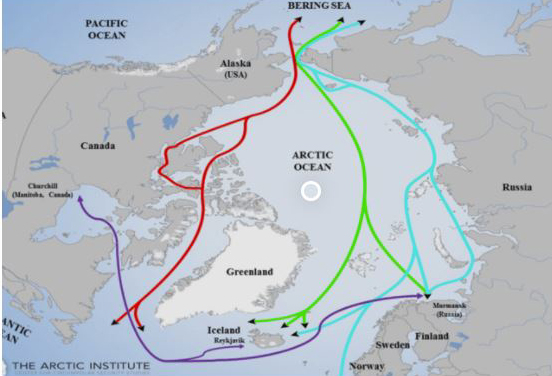By Marshall Murdock
History has taught us that all nations need a vision, otherwise “people will perish”. Without a long-term plan, without a vision, people are doomed to wonder aimlessly.
Examples of visionary realities: the first railway built in Canada was in 1836. On August 3, 1871, the first of the numbered treaties with local First Nations was signed in Lower Ft. Garry in Manitoba. In 1931 the Port of Churchill was built primarily for domestic services but ended up becoming an international service provider to world markets. The seven Treaty One First Nations envisioned the establishment of the largest urban Reserve in Canada at the former Kapyong Barracks, now called Naawi-Oodena. Under their leadership, this became a reality in 2021. This landmark project is not only for the Treaty One Nations, but also for Manitoba and Canada, including for other generations to come. This is vision.
NeeStaNan is a vision for Manitoba, Canada, and the international communities worldwide. NeeStaNan means “All of Us”. The NeeStaNan Corridor Group under the leadership of former chiefs, executives from oil and gas, university doctorates and researchers, and a corporate banking executive are on the visionary road to build a railway corridor from Ft. McMurray, Alta. to Prince Albert, Sask. to The Pas, Man. to the Port of Churchill, Man.
What is the NeeStaNan Corridor Project all about?
It’s all about the economics of world markets as it relates to the significant importance of getting the products to end users such as Brazil, Germany, and other European countries. But we have a problem/challenge. And the challenge relates to transportation. Agricultural products such as grain and other important commodities such as LNG and potash, are needed desperately in the European economy today. But the existing railway system in northern Manitoba, as it stands today, does not have the full capacity to meet the demand and supply of getting these products into the international markets.
How do we fix this situation?
First of all, we must clearly communicate the NeeStaNan vision and message to those communities that will be impacted by the building of this railway corridor This includes communities such as the First Nations and Métis in Alberta, Saskatchewan and northern Manitoba and a small number of Inuit settlements. NeeStaNan recognizes the importance of providing clear communication and vision to these communities because they have a full right to know and that right needs to be fully respected. Indigenous Canada has seen too many “let’s make a deal” only to later discover there was no real deal in the making.
Where do we start?
We have begun right here in our own backyard of Manitoba. We also particularly want to talk with the town of Churchill. Why the town of Churchill? Because there seems to be a misunderstanding of how NeeStaNan fits into the existing railway system.

NeeStaNan is totally on side with the current railway that provides goods and services to the community of Churchill and to local Indigenous communities. NeeStaNan wants to be a genuine compliment to the transportation railway system that has been there since time immemorial. We believe we must begin with a “meeting of the minds”. NeeStaNan also believes in the importance of the “duty to consult”. We are on that road today.
NeeStaNan’s Board of Directors are majority First Nations and Métis, including the CEO. The founding Proponent is non-Indigenous who began the journey 6.5 years ago along with other Indigenous and non-Indigenous leaders and business minded people. Included in that complement are engineers, architects, environmental staff, and experienced professionals that understand and support the vision of NeeStaNan. The NeeStaNan corporation is presently located in Calgary, but in the very near future the NeeStaNan head office will be located in Winnipeg. In the Treaty Five territory in northern Manitoba the two key host communities of the NeeStaNan Project are the Fox Lake Cree Nation and the York Factory Cree Nation. Without these two communities NeeStaNan would not proceed forward.
What are the next steps to move forward? There are a few major steps that need to be undertaken in order to proceed forward with 100% due diligence. What are those steps? Communication, feasibility, cooperation, and commitment. Communication with the entities that we believe need to be involved such as the town of Churchill and other Indigenous communities that could be potentially impacted in Alberta, Saskatchewan, and Manitoba. Renewed commitment and co-operation from the new provincial government of Manitoba and continued cooperation and commitment from Alberta and Saskatchewan to further the discussions about the importance of the NeeStaNan Project. We agree that there needs to be a comprehensive feasibility study on the NeeStaNan Corridor Project and to accomplish this, we have asked the provinces to assist financially with this important next step.
Finally, what are the benefits to our local economies in the western region? It doesn’t take a rocket scientist to figure that out. It’s all about growing our economies in Alberta, Saskatchewan, and Manitoba and all of Canada for that matter. It’s all about jobs and economic spin-offs and putting Canada on the international map once again and showing why Canada is a valuable and honourable partner that is good to do business with. It will demonstrate why Canada is a true leader when it comes to taking up the challenge and torch in the international and global economy. My challenge to you is let’s collectively take up this exciting 21st century economic opportunity and challenge. We can do it and make it a “win-win” for All of Us.
Marshall Murdock is a member of Fisher River Cree Nation and is on the NeeStaNan Board of Directors.



